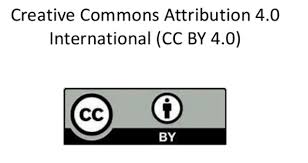Impact of silica nanoparticles on the digestibility and growth efficiency of rohu (Labeo rohita)
DOI:
https://doi.org/10.47440/JAFE.2023.4405Keywords:
Silica nanoparticle, Rohu, Digestibility, Nanotechnology, FCRAbstract
The research was conducted to evaluate the effect of silica nanoparticle (NP) on the growth and digestibility of rohu (Labeo rohita) in the Wet Laboratory, Department of Aquaculture, Bangladesh Agricultural University. Highly pure, activated silica NP at different levels 0, 1, 2, 3 mg/kg were incorporated into different treatments T0, T1, T2, T3 possessing three copies. Thirty fish with a mean weight (± SD) of around 2.62 ± 0.02 g were assigned in a recirculatory aquaculture system, maintained in each treatment and fed with their respective diets in 12 tanks. Feeds were supplied at the rate of 10% for 4 weeks and 5% of the body weight for the rest of the experimental period. Water quality parameters were within the acceptable range during the study period. Results showed that growth parameters and feed efficiency dramatically increased as silica NP levels rose at 2 mg/Kg and then decreased. The highest final weight (9.25 ± 0.07) g, percent weight gain (252.99 ± 2.6) %, final length (8.6 ± 0.14) cm, length gain (3.2 ± 0.13) cm, SGR (2.1 ± 0.01) %/day, FCE (71.67 ± 0.21), apparent protein digestibility (87.17 ± 2.6) %, dry matter digestibility (78.17 ± 1.18) % and survival rate (97.5 ± 0.71) % were found in T2 and the highest FCR (1.56 ± 0.02) was found in T0. The current investigation found that the growth performance was optimal of L. rohita found at the level of silica up to 2 mg/kg and then decreased. The findings could be incorporated in fish feed producing practices for increased fish production.






 Publisher:
Publisher: 